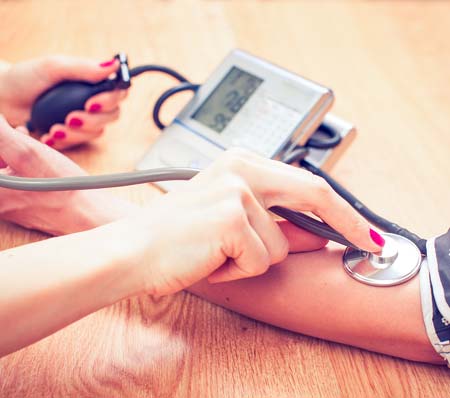
How to take care of your heart? European Day for the prevention of cardiovascular risk
Do you know your heart? Learn how to take care of it.
March 14th. European Day for the Prevention of Cardiovascular Risk.
Smoking, sedentarism, unbalanced diet, obesity, hypertension, stress... are some of the risk factors that affect our cardiovascular health. The World Health Organisation reminds us that cardiovascular diseases are now the biggest cause of death worldwide and also states that these premature deaths are easily avoided by reducing risk factors and following a healthy lifestyle.
In order to raise public awareness of the importance of cardiovascular diseases and the best ways to prevent them, the European Commission has established the European Day for Preventing Heart Disease on 14 March. It is important to know your heart in order to understand how to take better care of it.

The cardiovascular system.
Before we get down to the business of preventing cardiovascular disease, it is necessary to explain what the cardiovascular system is and how it works.
Our cardiovascular system is made up of the heart and a system of arteries, veins and capillaries that carry blood throughout the body. It is estimated that an adult male has a blood volume of between 5 and 6 litres and an adult female has between 4 and 5 litres.
Blood is an essential element for life because it is responsible for carrying oxygen and nutrients to each of the cells in our body and, furthermore, it also facilitates the elimination of waste produced in the different tissues of our body. You may remember that most blood is made up of an aqueous fluid that contains a protein called plasma. The other most important components of blood are cells, white blood cells and platelets.
The heart and its parts.
The heart acts as a propulsion pump that provides energy to the different parts of our body. This pump usually beats between 60 and 100 times per minute. With each of these beats, our heart sends blood throughout our body and with the blood it carries oxygen and nutrients to the cells. After this oxygen is delivered, the blood is returned to the heart and from there it is then pumped back to the lungs where it is loaded with oxygen again. And so on, again and again.
The heart has four chambers, two at the top and two at the bottom:
- The right and left ventricles are the two at the bottom and are made to pump blood out of the heart. A wall called the interventricular septum divides the two ventricles.
- The right and left atria are the two upper ones and their function is to receive the blood that goes into the heart. Again, a wall called the atrial septum divides the two atria.
- At the same time, the atria are separated from the ventricles by the atrioventricular valves:
- The tricuspid valve separates the right atrium from the right ventricle.
- The mitral valve separates the left atrium from the left ventricle.
- Two other heart valves separate the ventricles from the blood vessels that carry blood out of the heart. These are the pulmonary valve and the aortic valve.
What is the best for the heart?.
As we said, a large number of deaths from cardiovascular disease are preventable, according to the WHO:
- Smoking, poor diet and physical inactivity increase the risk of heart attacks and strokes.
- Doing exercise for at least 30 minutes every day helps prevent cardiovascular disease.
- Eating at least five portions of fruit and vegetables a day and reducing salt intake to less than a teaspoon a day can also help.
What foods are good for heart care?.
The Spanish Heart Foundation provides ten healthy foods with many beneficial properties for the heart. They are as follows:
- Nuts.
- Broccoli.
- Dark chocolate.
- Strawberries.
- Curry.
- Green tea.
- Olive oil.
- Salmon
- Cereals or seeds
- vegetables
How do I know if I have a heart problem?.
Although cardiovascular pathologies do not always appear, there are some alert signs that can tell us about the possibility of suffering from them. The most common symptoms are the following:
- Chest pain.
- Fatigue.
- Difficulty in breathing.
- General weakness.
- Changes in the colour of the skin.
- Anxiety.
- Fainting.
- Dizziness
- Nausea and vomiting.
- Palpitations
- Intense sweating
- Coughing or wheezing.
- Swelling of the legs, ankles and feet.
Many of these symptoms are so non-specific that they can be easily confused with other pathologies. In any case, when the symptoms are clearly serious, such as the following, it is recommended to call the emergency telephone number:
- If you have chest pain or other symptoms of a heart attack.
- If you have already suffered from angina and you have chest pain that does not disappear after 5 minutes of rest or after taking the medication.
- If you think you may be having a heart attack.
- If you have extreme difficulty breathing.
- If you think you may have lost consciousness.
Cardiovascular risk factors.
We call cardiovascular risk factors to those associated with a higher probability of suffering from cardiovascular disease. The most common are the following:
- Cholesterol.
- Diabetes.
- Periodontal disease.
- Hypertension.
- Smoking.
- Genetic inheritance.
- Stress and anxiety.
- Sedentary lifestyle and lack of physical exercise.
- Unbalanced diet.
- Obesity
- Heart rate.
How to prevent cardiovascular risk?.
It is enough to take into account the risk factors listed above to know that, in some cases, we can avoid them. As recommendations, there are different measures that will help you to reduce the risk:
- Control your blood pressure.
- Keep your cholesterol and triglyceride levels under control.
- Maintain a healthy weight.
- Take care of your diet.
- Exercise regularly.
- Moderate or avoid alcohol consumption.
- Avoid smoking.
- Control stress and anxiety.
- Diabetes increases the risk of heart disease twice as much as diabetes. If you have diabetes, keep your blood sugar levels under control.
- Take care of the quality of your sleep.

What diseases affect the cardiovascular system?.
Most cardiovascular diseases are known to cause the arteries of the heart to narrow, thus reducing the amount of blood the heart receives, making the heart muscle work harder. These pathologies, as we said at the beginning, are the first cause of death in the world above cancer.
Main diseases of the cardiovascular system in the world.
The World Health Organization states that more than 17 million people worldwide die every year from cardiovascular diseases.
The best known and most common cardiovascular diseases are heart failure, ischemic heart disease, stroke, high blood pressure, arrhythmia, angina and heart attack.
Heart disease and stroke are the most lethal of these.
Ischemic Cardiopathy.
Ischemic cardiopathy is the disease caused by the arteriosclerosis of the coronary arteries, that is, those responsible for providing blood to the heart muscle (myocardium). Coronary arteriosclerosis is known for the deposit of layers of fat in the coronary arteries, which makes this supply of oxygen difficult. This disease, which usually does not cause symptoms, can result in angina, heart attacks and/or thrombosis.
Strokes or ictus.
Stroke, also known as cerebral infarction or embolism, is caused when there is a rupture or obstruction in a blood vessel, which reduces the flow of blood to the brain. As a result, the nerve cells do not receive oxygen and stop working.
Acute myocardial infarction.
Infarction is a kind of ischemic heart disease that is caused by the damage and blockage of the arteries of the heart. It is caused by the build up of cholesterol and lipid plaques on the walls of these arteries, which affects the amount of blood that the heart receives.
High blood pressure.
Blood pressure measures the force used against artery walls when the heart pumps blood into the body. Blood pressure measurements have two numbers: systolic or high blood pressure and diastolic or low blood pressure. A normal blood pressure reading is 120/80. Over these values, we may already speak of hypertension.
Heart failure.
Heart failure is caused when the heart muscle does not pump blood properly as it should. Narrowed arteries or high blood pressure can lead to this condition.
Congenital heart disease.
Congenital heart disease is a problem with the structure and the functioning of the heart that is present at birth. It causes more deaths in the first year of the life of a baby than any other birth defect.
Rheumatic heart disease.
Rheumatic heart disease is a condition that causes permanent damage to the valves of the heart and results from rheumatic fever. The latter condition, rheumatic fever, happens as a response by our body to a throat or tonsil infection from streptococcus.
Cardiomyopathies.
It is a disease that can weaken the heart muscle and usually happens when the heart cannot pump blood or work properly. Most people with cardiomyopathy also have heart failure.
Arrhythmia.
Heart rate is a disorder of the heart frequency or rhythm. The heart can beat too fast, called tachycardia, or too slow, called bradycardia, or even irregularly.
Angina Pectoris.
Angina is defined as chest pain or discomfort caused by a lack of blood supply to the heart. Angina can also cause pain in the shoulders, arms, neck, jaw or back.
In conclusion, the message to be given on the European Day for Preventing Cardiovascular Risk is that prevention of cardiovascular disease may be in our hands if we keep to the recommendations: practice sport, take care of our diet, avoid toxic habits and, in short, keep a healthy lifestyle.





